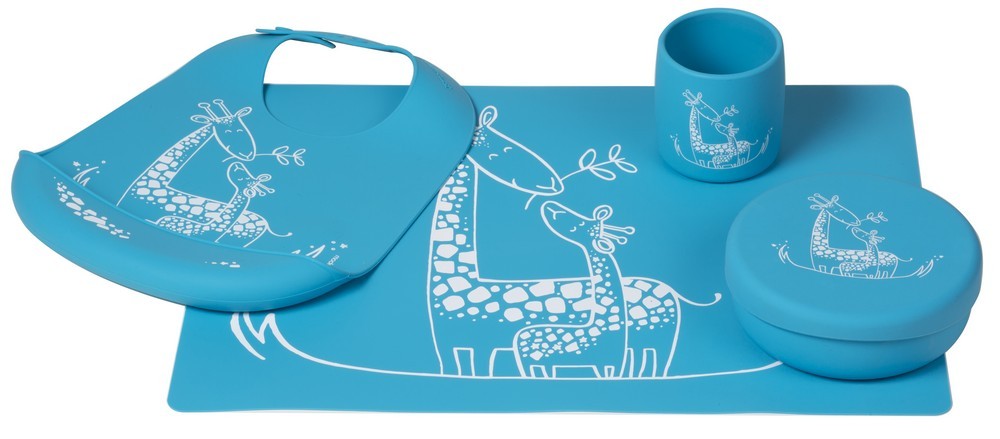Should We Use Silicone to Feed Our Children?
We asked experts at the Children's Environmental Health Center (CEHC) for their take on using silicone products around children. Dr. Sarah Evans, PhD MPH, from the CEHC shares her thoughts with us here:
Food grade silicone is an FDA-approved synthetic rubber made of bonded silicon, a natural element found in sand and rock, and oxygen. Silicone has a long track record for safe use in baby bottle nipples, pacifiers and teethers, and has recently become popular in bakeware and kitchen items as an alternative to latex, plastic, and Teflon.
From an environmental standpoint, silicone is reusable and extremely durable. Although not biodegradable, it is recyclable. While silicone is purportedly nontoxic to aquatic wildlife, some siloxanes, silicone-oxygen compounds used in many silicone products, are persistent in the environment and their toxicity profile is not well established1.
Health Canada has concluded that silicone is safe for use in baby products and bakeware as it is stable and does not leach chemicals or off gas fumes2. However, studies of silicone products exposed to high heat over long periods of time are lacking. Simulation studies show that low molecular weight siloxanes, formed by the reaction of silicone and oxygen, can migrate from silicone into food and that migration rates depend upon temperature, fat content of the food, and length of contact time3. A recent study demonstrated much lower siloxane content and migration from silicone bottle nipples compared with bakeware4. Limited evidence from laboratory studies suggests that some siloxanes may be estrogenic or carcinogenic, but further study is needed5. No human health effects from silicone or siloxane exposures have been reported.
The bottom line: When deciding whether to use silicone products, it’s important to talk to manufacturers about their composition. Choose food grade silicone that is BPA/BPS/BPF and lead-free and does not contain additional fillers. Silicone baby products, when used as directed, seem to pose little risk of harmful exposures. Likewise, silicone kitchen products that are not exposed to high heat such as spatulas or cutting mats should pose minimal risk. Glass, ceramic, or stainless steel are good options for items that come into contact with food at very high temperatures.
Follow the CEHC on twitter and receive updates on the latest environmental health research.
1. Norden. 2005. Siloxanes in the Nordic Environment. TemaNord 2005:593. Nordic Council of Ministers, Copenhagen. Available at http://www.norden.org/pub/miljo/miljo/uk/TN2005593.pdf.
2. http://healthycanadians.gc.ca/product-safety-securite-produits/consumer-consommation/education/household-menagers/cook-cuisinier-eng.phpKai Zhang, Jon W.
3. Helling R, Kutschbach K, Simat TJ. 2010 Migration behaviour of silicone moulds in contact with different foodstuffs. Food Addit Contam A. 27.:396–405.
4. Wong, Timothy H. Begley, Douglas G. Hayward and William Limm
Determination of siloxanes in silicone products and potential migration to milk, formula and liquid simulants. Food Additives and Contaminants Vol. 29, No. 8, August 2012, 1311–1321
5. http://oehha.ca.gov/multimedia/biomon/pdf/1208cyclosiloxanes.pdf


